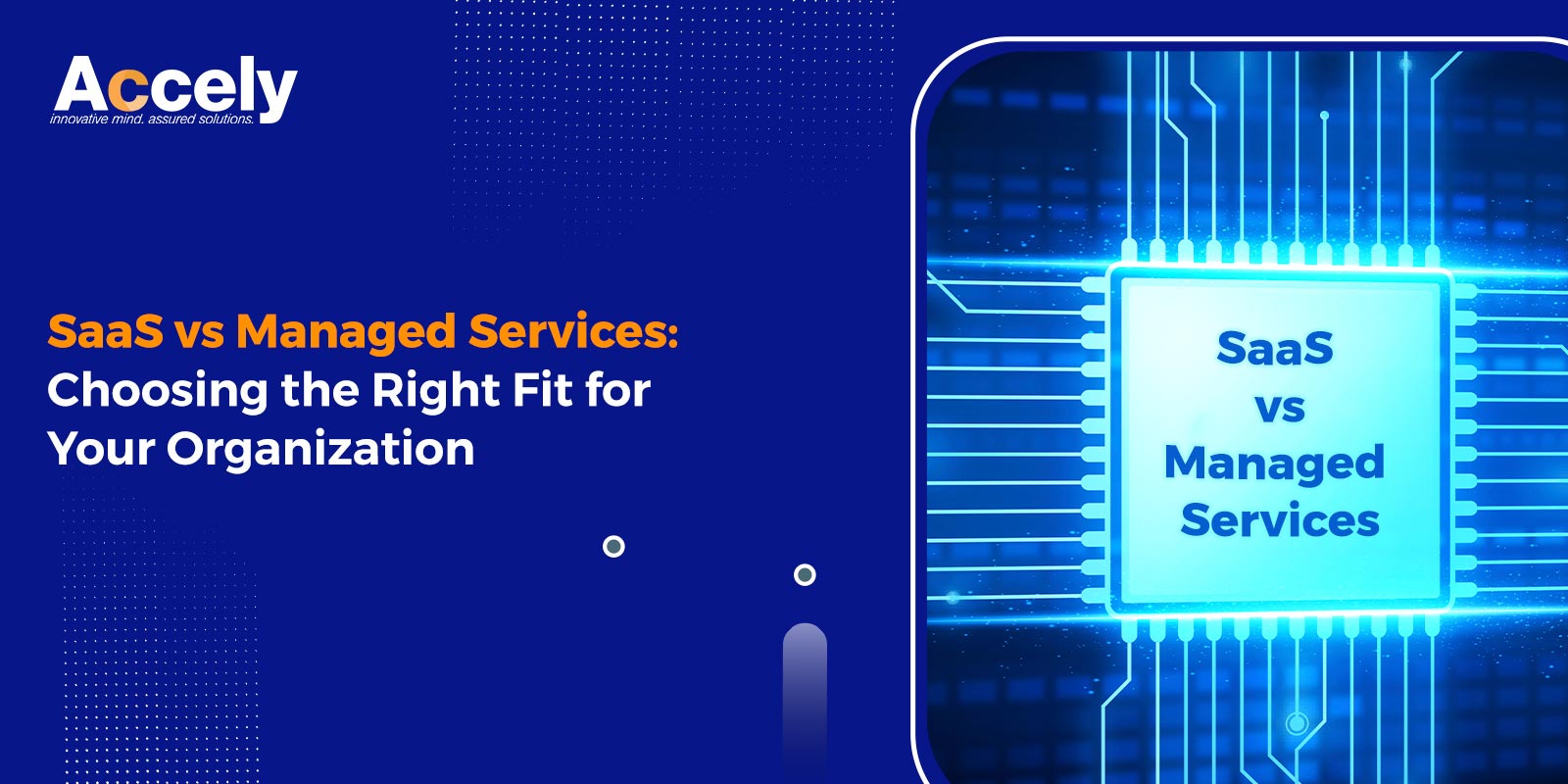SaaS vs Managed Services: Choosing the Right Fit for Your Organization
08-Nov-2023
Today, mid-sized companies are celebrating the wealth of services for IT and customer service requirements. These outsourced resources provide a cost-effective solution to address complex technical challenges, eliminating the need for substantial investments in server installation, maintenance, software engineering, or maintaining an on-call staff. In today’s dynamic business environment, organizations face a critical decision when it comes to managing their IT needs efficiently. With the ever-expanding array of services available, the choice between Software as a Service (SaaS) and Managed Services can significantly impact an organization’s operational efficiency, cost-effectiveness, and overall success.
In this blog post, we’ll delve into the primary considerations surrounding managed services while exploring the relationship between SaaS and managed services software.
Understanding Managed Services
Managed services can offer a more personalized approach to support your business needs. Unlike generic software subscriptions, managed services provide dedicated experts who are subcontracted to you through the company. These professionals are not just individuals seeking temporary work; they are seasoned experts in their respective fields.
Expertise in the Field
The individuals provided by managed services are typically specialists in their domains. Whether you require assistance with SAP support, digital transformation consulting, or application-managed services, you can expect a high level of expertise. This specialization ensures that you receive tailored solutions from professionals who understand the intricacies of your industry.
Personalized Support
Managed services go beyond mere software usage by offering real people to assist you. This personalized approach can significantly enhance your experience compared to dealing with generic support channels. Whether you are exploring SaaS services or require assistance with SAAS management, having dedicated experts at your disposal ensures that your unique business requirements are understood and addressed effectively.
Costs
The costs of managed services can vary based on several factors, including the specific needs of the business and the level of support required. Managed services, encompassing areas such as SAAS services, managed services software, and SAAS management, typically operate on a subscription or contractual basis. The pricing structure may be influenced by the scope of services, the expertise of the managed services provider, and the technology stack involved.
Reputable managed services providers, such as those specializing in application-managed services, SAP support, and business transformation consulting, may command higher fees due to their expertise and established track record. The level of customization, scalability, and service commitments outlined in Service Level Agreements (SLAs) can further impact the overall costs.
Businesses should carefully assess their requirements, ensuring that the chosen managed services provider aligns with their technology needs and growth objectives. Understanding the pricing model, including any potential additional fees, and considering factors such as the duration of the contract and the provider’s reputation is crucial in making an informed decision. While managed services can involve initial expenses, the long-term benefits, including enhanced efficiency, specialized expertise, and scalable solutions, often outweigh the costs, making it a valuable investment for businesses seeking reliable and tailored support.
Understanding SaaS (Software as a service)
Software-as-a-Service (SaaS) is a service category enabling your company to subscribe and onboard users to an established software program that operates externally from your company’s infrastructure. This allows you and your team to log in remotely, accessing the program’s benefits for various tasks, including bookkeeping, payroll, research, and report presentations.
Given the dynamic nature of this information, it is not stored locally on your computer but is accessible through a web portal. Access to this data requires an annual or monthly subscription. As long as your account remains current, you retain continuous access to the updated information. However, in rare instances where the SaaS organization identifies misuse or attempts to manipulate the software, there is a potential risk of being banned from its use.
Costs
The costs associated with Software-as-a-Service (SaaS) vary based on several factors. SaaS services, including managed services software and SaaS management, typically operate on a subscription model, where users pay recurring fees at intervals such as monthly or annually. The pricing structure considers aspects such as the included features, the number of users, and the level of support provided by the SaaS provider.
Businesses looking into SaaS solutions, especially those considering SaaS services, should carefully review pricing details, taking note of any additional fees. Some SaaS providers offer tiered pricing plans, providing flexibility for users to choose packages that align with their specific needs and budget constraints. In the context of managed services, including application managed services, sap support, and business transformation consulting, understanding the scalability options and evaluating the long-term value of the software is crucial in making informed decisions about the costs associated with adopting SaaS solutions. Whether you are seeking a managed services provider or exploring SaaS management, a thorough assessment of pricing structures and service offerings will help ensure that your chosen SaaS solution aligns seamlessly with your business requirements.
Managed Services vs SaaS?
The choice of solution for an organization hinges predominantly on its specific business requirements. For those seeking assistance in overseeing and managing their IT infrastructure, opting for managed IT services proves to be an ideal solution. Conversely, for organizations in need of essential software delivered through the cloud to meet their specific needs, a SaaS solution emerges as a more fitting choice.
Furthermore, upon dissecting the distinctions and parallels between managed services and SaaS, any organization will grasp that both these services are oriented towards enhancing the efficiency of IT systems and networks. As an organization’s IT infrastructure evolves with technological advancements, there’s a notable chance that the organization will consider integrating either managed IT services or a SaaS solution to address increasing complexity. Regardless of the chosen path, it is imperative for any organization to ensure that these services contribute to long-term benefits, extending beyond the challenges posed by complexity in the current scenario.











